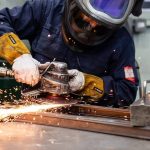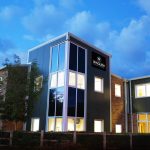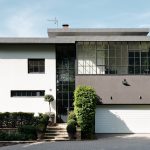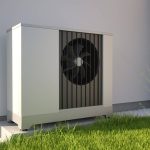Why fire-rated is the future of aluminium decking
Paul Smith, F.H. Brundle’s Head of Marketing, charts the changes in fire regulations we have seen implemented over the last four years.
The Grenfell tragedy exposed that, in some parts of our sector, attitudes to fire safety were far too lax for far too long.
In the four years that followed, fire regulations rightly came under forensic attention right across construction and the built environment – and now, products that go into high-rise buildings must meet stringent standards.
An independent commission, headed by former Health and Safety Executive Chair Dame Judith Hackitt, conducted a comprehensive investigation with the aim of identifying areas where regulations could be improved.
The result was a lengthy list of recommendations, which the government accepted, and enshrined in law in December 2018.
Contrary to what many were expecting at the time, Dame Judith did not recommend banning combustible materials.
However, after conducting its own consultation exercise, the government went on to outlaw their use on buildings over 18m tall that contained one or more dwellings.
Two years later, it was considering tightening restrictions even further – with a second consultation, held during the spring of 2020, seeking feedback on proposals to ban any combustible products over heights of 11m.
At the time of writing, we are still waiting for ministers to digest the submissions they have received and publish their conclusions – a process that’s understandably been held up by the ongoing coronavirus pandemic.
But it is no surprise that many installers, contractors, building managers and others are steering clear of any combustible product on projects over 11m just to be safe.
Fire standards explained.
For products intended for use above the current 18m limit, the most important standard is BS EN 13501-1.
During the assessment process, products are subjected to up to five rigorous tests, designed to review combustibility, smoke, the spread of flame and so on.
Then, products are given three ratings. The first is represented by a letter – A1 is the highest, F is the lowest. An A1 rating means a product is non-combustible, A2-rated products are described as having limited combustibility, while anything below that is considered flammable.
The second rating concerns how much smoke a product would produce, and is represented by an s1, s2 or s3 designation, with s1 being the best, s3 being the worst.
Finally, the third assesses how many flaming droplets or particles a product produces when it is on fire – with ratings ranging from d0 to d2.
It is also worth noting that products that receive an A1 rating are not given an s or d designation, because if they are totally non-combustible, they won’t produce any smoke, droplets or particles.
Quality non-combustible decking
Here at F.H. Brundle, when we decided we wanted to develop a quality aluminium decking system suitable for all decking applications including the high-rise constructions, achieving outstanding fire performance was our highest priority.
The result was Synergised – a robust, fully fire-rated aluminium decking system designed to meet the rigorous demands and standards of twenty-first-century usage.
Synergised is A1 & A2fl-s1 fire-rated for commercial and residential buildings, making it ideal for high-rise applications.
What’s more, it’s made from structural-grade 6063 T6 aluminium, and finished with a 100-micron Qualicoat™ premium powder coating, giving it exceptional colour retention, even after years of exposure to the sun.
Its highly slip-resistant surface is comfortable underfoot, and stays cool in hot weather, while the system itself is extremely quick and easy to install and can offer up to a 50% cost saving when compared to similar systems.
If you would like to learn more about Synergised, or request a free sample, call our sales desk on 01708 253545 or visit www.fhbrundle.co.uk.














